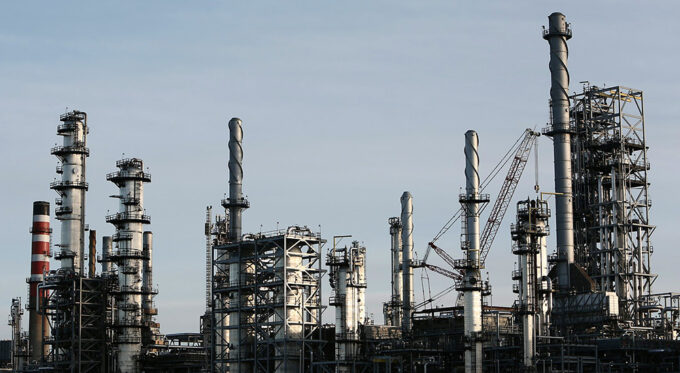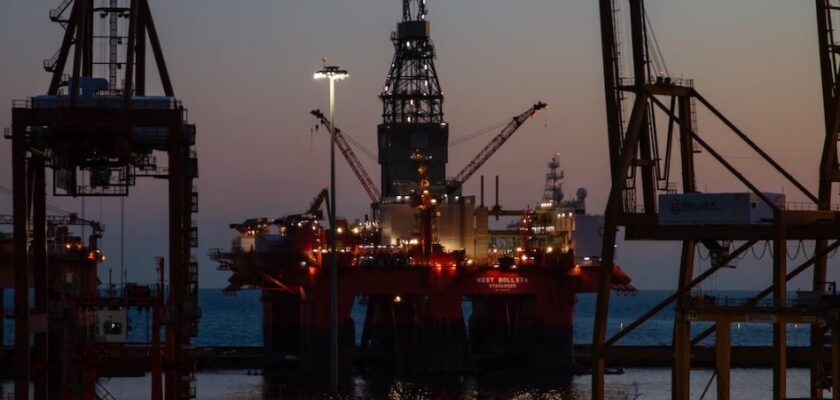Some alloys, like stainless steel, are so versatile that they find applications across several industries. Stainless steel is an alloy of iron that contains at least ten percent chromium. Adding chromium and other elements like carbon gives some unique properties to the alloy. Adding elements like chromium also helps overcome some of the major limitations of metals like iron.
If you ever visit a stainless steel plate supplier, they will show you different types of steel plates. Each grade of stainless steel plate has different properties and utilities. Some grades have very high levels of mechanical strength, and others have a higher ability to withstand high temperatures.
If you wish to know more about the industrial applications of alloys of iron, continue to read to learn more.
Some Industries That Use Stainless Steel Plates
Industries that manufacture goods on a large scale always try to maintain high productivity. A productive industrial setup produces many units in less time and has low maintenance charges.
Usage In The Chemical And Petrochemical Industry

Source: stainless-structurals.com
Stainless steel can tolerate corrosive chemicals. Some grades like austenitic, super ferritic, or duplex steel, are as good as nickel and titanium alloys for corrosion resistance.
An industrial unit that ignores the need to reduce corrosion in its pipes and valves often has pipeline failures. Pipeline failures are notorious for causing immense production losses and high repair costs.
Chemical industries manufacture or purify chemicals, and petrochemical industries refine petroleum products. Manufacturing chemicals and refining crude petroleum use strong acids and other flammable chemicals. Using stainless steel plates to make the pipes and containers significantly reduces damage due to corrosion.
Moreover, valves, measuring devices, and flow monitoring systems are responsible for accurate measurements and volume control. Hence it is vital to restrict corrosive damage and degradation to these devices and equipment so that the chemical composition and purity of products are not hampered. Hence, stainless steel is the material of choice when installing equipment at a refining unit.
Apart from corrosion resistance, stainless steel’s weldability and mechanical strength are helpful in the petrochemical industry. A metallic sheet that can be welded and deformed easily without developing cracks is great for making industrial vessels and equipment.
Moreover, some grades of stainless steel, like duplex steel, have an excellent strength-to-weight ratio. A high strength-to-weight ratio is helpful for industrial applications as vessels of duplex steel can hold a lot of weight without being heavy themselves.
Usage In Marine Applications

Source: unifiedalloys.com
Marine applications are an umbrella term for industrial operations at an offshore location. Depending on the industry type, marine operations can involve an oil rig used for drilling petroleum. Alternatively, for the food processing industry, marine operations may involve collecting fish that are eventually processed.
Marine environments are very demanding because any instrument or vessel sustaining itself in the sea must tolerate salt water continuously. Moreover, if any vessel is to be used under the sea, it also has to withstand the water pressure.
Water pressure is directly proportional to the depth at which a vessel or a piece of equipment is placed. So the greater the depth at which a piece of machinery operates, the larger the p[ressure it has to endure.
Stainless steel plates of grade 304 are frequently used in boat fittings, and that of grade 316 are used. These two grades possess great strength; hence they can withstand the pressure of water. They are resistant to corrosion, and they are not magnetic.
304-grade stainless steel is useful for applications around the coast that are subjected to intermittent submersion in water. Duplex grade plates are suitable for those applications that require better corrosion resistance vis-a-vis pilates of grades 304 and 316.
So the grade of stainless steel sheets that are used in specific marine operations depends on many factors like
- The quality of the water. The properties of a pristine water body will vary greatly compared to one polluted.
- The rate at which the water flows or the extent of the tide that the water body witnesses. Usually, places with a narrow inlet of water, like a gulf, have a higher tidal range than an open body of water.
- The general temperature range is the difference between the maximum and minimum temperature in a period of twenty-four hours
- The levels of dissolved oxygen in the water body. Usually, the amount of dissolved oxygen in a water body depends on several factors, like the temperature and the amount of nutrients that the water receives, etc.
- The amount of time for which a piece of stainless steel equipment must remain submerged in water
Usage In Architecture

Source:unsplash.com
When it comes to architecture, the strength and durability of the building or monument are vital. Stainless steel is the perfect material that combines durability and tensile strength. Moreover, stainless steel is highly fabricable, so it is excellent from the viewpoint of new design creation and innovation in building a structure.
Fabrication involves three main steps: cutting, bending, and then assembling the component parts. Since stainless steel plates have high tensile strength and malleability, they do not crack or break when bent or twisted. So when you have a stainless steel sheet, you can roll, spin, or cold forge it using the requisite force.
Conclusion
When it comes to alloys of iron, stainless steel stands out for its sheer strength and ability to withstand corrosion. The chromium added to iron forms a passive non-reactive layer on the material. This non-reactive layer prevents further reaction with ambient oxygen and prevents rusting.
Apart from this, the ease of fabrication and welding help in the easy transformation of stainless steel sheets into a variety of designs. Industries like construction and petrochemical refining would come to a standstill without using stainless steel parts. And the wide usage and sheer popularity of this alloy make it one of the most rapidly growing industries in the world, with an expected CAGR of almost 9% between 2022 and 2030.

